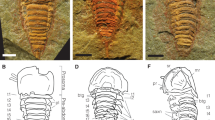Abstract
Peritrichs (Urceolaridæ) living on the surface of flatworms seem to afford suitable material for a study of the population dynamics of the epizoic habit. The host is widespread, occurs in large numbers, and the smooth surface enables rapid estimation of the numbers of the epizoite. A technique has been developed whereby some twenty flatworms can be dealt with in an hour.
This is a preview of subscription content, access via your institution
Access options
Subscribe to this journal
Receive 51 print issues and online access
$199.00 per year
only $3.90 per issue
Buy this article
- Purchase on Springer Link
- Instant access to full article PDF
Prices may be subject to local taxes which are calculated during checkout
Similar content being viewed by others
References
Peshkowsky, L., Arckh. russk. protist. Obshch., 2, 249–279 (1923).
Fulton, J., Proc. Boston Soc. Nat. Hist., 37, 1–30 (1923).
Whitehead, H., J. Quekett Micr. Cl., 2nd series, 12, 544 (1915).
Author information
Authors and Affiliations
Rights and permissions
About this article
Cite this article
REYNOLDSON, T. Urceolarian Epizoites of Flatworms. Nature 160, 265–266 (1947). https://doi.org/10.1038/160265a0
Issue Date:
DOI: https://doi.org/10.1038/160265a0
This article is cited by
-
British Species of Polycells (Platyhelminthes)
Nature (1948)
Comments
By submitting a comment you agree to abide by our Terms and Community Guidelines. If you find something abusive or that does not comply with our terms or guidelines please flag it as inappropriate.



